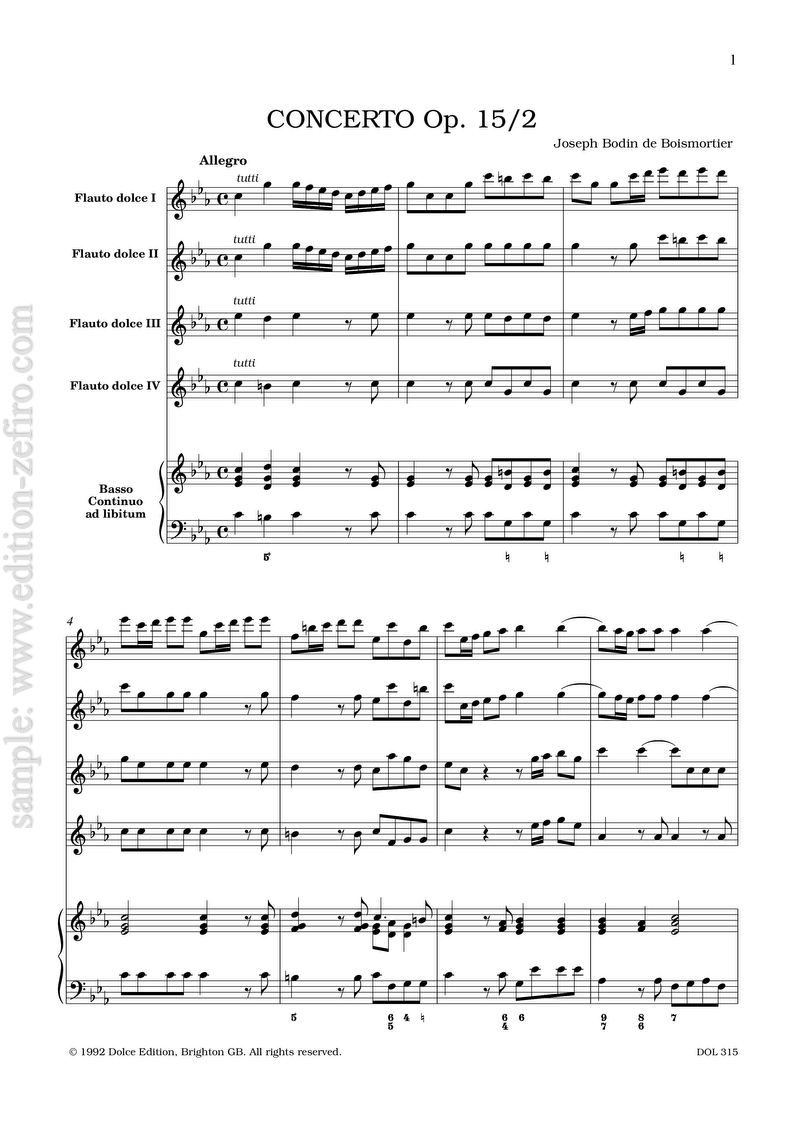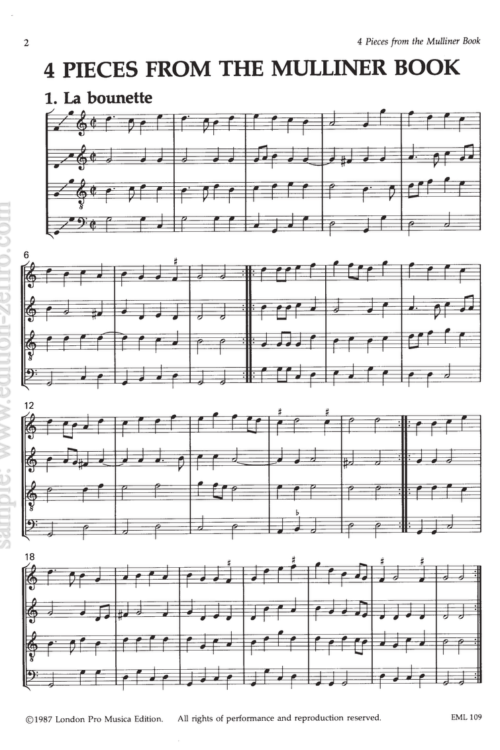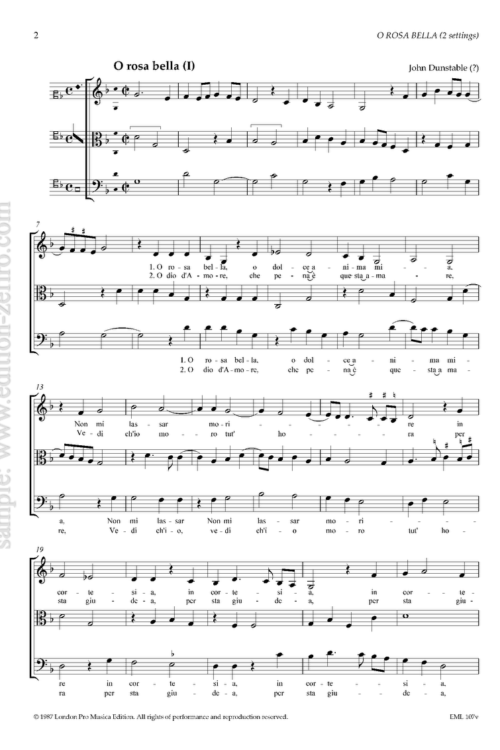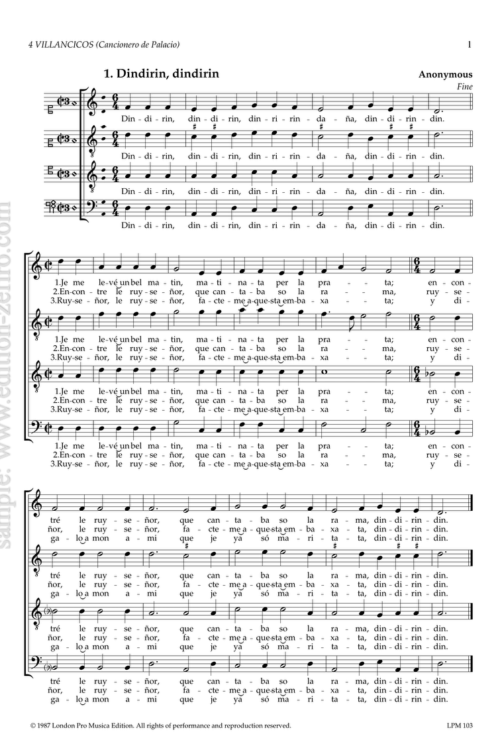For 4-5 alto recorders with optional continuo. The first of four arrangements of the Boismortie concertos for five flutes. In the original print, the fifth flute has a figured bass, which suggests that the pieces can be performed in a variety of ways; also the 4th and 5th flutes share the same line much of the time. Our edition can be played on (a) 4 recorders, (b) 5 recorders, or (c) 4 recorders and continuo.
The title page of the collection from which this concerto is taken reads: XVe OEuvre de mr. Boismortier, Contenant VI Concertos Pour 5 Flûtes-Traversieres ou autres Instrumens, sans Basse. On peut aussy les jouer avec une Basse. . . Avec Privilège du Roy, 1727.
Interestingly, the fifth flute part is figured, even though it is written at the normal pitch for a flute. Clearly there is more than one way of performing these pieces, and such ambiguity is in line with other French instrumental publications of the time: Michel Blavet’s series of books for two flutes, the Recueils de Pieces, petits Airs, Brunettes… contains many pieces where the second flute part acts like a bass part; some of these actually work better for flute and continuo. Presumably these publications were aimed at wealthy amateurs who played the flute but could not always find a continuo player.
Interestingly, in spite of Boismortier’s suggestion that the continuo is optional, there are some cases in these concertos where the music is harmonically incomplete without the continuo: there are sometimes suspensions indicated in the figures that do not appear in the flute parts.
Transferring these pieces from flute to recorder, with the resultant loss in dynamic contrast, it is questionable whether it is ideal to perform them with five recorders: for most of the time the fifth flute part is identical to the fourth, which can result in balance problems on recorders. This edition is designed to be as flexible as possible: the music can be done (a) with four recorders and normal continuo, (b) five unaccompanied recorders, (c) four unaccompanied recorders (playing the alternatives printed in small notes in the parts). If option (b) is chosen, it is possible to play the fifth part on bass recorder, if one can be found that is compatible with the other recorders.
Boismortier was quite careful to label the parts “solo” and “tutti”. This may have been to allow for an “orchestral” performance on strings with or without wind. But it is also helpful even in a normal performance on flutes to know what is foreground, what background. “Tutti” is not always “loud”.
We should not necessarily assume that “continuo” means harpsichord and cello or gamba; plucked instruments can be used, such as guitar or lute.
In this edition the music has been transposed up a minor third in the usual way. The score follows the original exactly, except that the fifth flute part has been transposed down an octave or two, as the case may be, to make a continuo. In the parts, alternative notes are provided for those who want to play the music in four parts unaccompanied.
(David Katz)






